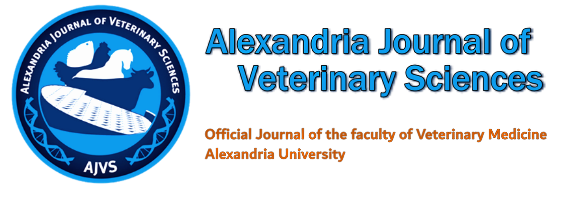
| Original Article | ||||||||||||
AJVS. 2023; 76(1): 96-107 doi: 10.5455/ajvs.134044 Inactivation of Avian Influenza Viruses by Chemical Disinfectants and the Influence of Faecal Matter Mohamed Samir, Mariam Hassan Elbana, Alaaeldin Mohamed Saad, Amany Abass, Gamelat K. Farag.
| ||||||||||||
| How to Cite this Article |
| Pubmed Style Samir M, Elbana MH, Saad AM, Abass A, Farag GK. Inactivation of Avian Influenza Viruses by Chemical Disinfectants and the Influence of Faecal Matter. AJVS. 2023; 76(1): 96-107. doi:10.5455/ajvs.134044 Web Style Samir M, Elbana MH, Saad AM, Abass A, Farag GK. Inactivation of Avian Influenza Viruses by Chemical Disinfectants and the Influence of Faecal Matter. https://www.alexjvs.com/?mno=134044 [Access: May 04, 2025]. doi:10.5455/ajvs.134044 AMA (American Medical Association) Style Samir M, Elbana MH, Saad AM, Abass A, Farag GK. Inactivation of Avian Influenza Viruses by Chemical Disinfectants and the Influence of Faecal Matter. AJVS. 2023; 76(1): 96-107. doi:10.5455/ajvs.134044 Vancouver/ICMJE Style Samir M, Elbana MH, Saad AM, Abass A, Farag GK. Inactivation of Avian Influenza Viruses by Chemical Disinfectants and the Influence of Faecal Matter. AJVS. (2023), [cited May 04, 2025]; 76(1): 96-107. doi:10.5455/ajvs.134044 Harvard Style Samir, M., Elbana, . M. H., Saad, . A. M., Abass, . A. & Farag, . G. K. (2023) Inactivation of Avian Influenza Viruses by Chemical Disinfectants and the Influence of Faecal Matter. AJVS, 76 (1), 96-107. doi:10.5455/ajvs.134044 Turabian Style Samir, Mohamed, Mariam Hassan Elbana, Alaaeldin Mohamed Saad, Amany Abass, and Gamelat K. Farag. 2023. Inactivation of Avian Influenza Viruses by Chemical Disinfectants and the Influence of Faecal Matter. Alexandria Journal of Veterinary Sciences, 76 (1), 96-107. doi:10.5455/ajvs.134044 Chicago Style Samir, Mohamed, Mariam Hassan Elbana, Alaaeldin Mohamed Saad, Amany Abass, and Gamelat K. Farag. "Inactivation of Avian Influenza Viruses by Chemical Disinfectants and the Influence of Faecal Matter." Alexandria Journal of Veterinary Sciences 76 (2023), 96-107. doi:10.5455/ajvs.134044 MLA (The Modern Language Association) Style Samir, Mohamed, Mariam Hassan Elbana, Alaaeldin Mohamed Saad, Amany Abass, and Gamelat K. Farag. "Inactivation of Avian Influenza Viruses by Chemical Disinfectants and the Influence of Faecal Matter." Alexandria Journal of Veterinary Sciences 76.1 (2023), 96-107. Print. doi:10.5455/ajvs.134044 APA (American Psychological Association) Style Samir, M., Elbana, . M. H., Saad, . A. M., Abass, . A. & Farag, . G. K. (2023) Inactivation of Avian Influenza Viruses by Chemical Disinfectants and the Influence of Faecal Matter. Alexandria Journal of Veterinary Sciences, 76 (1), 96-107. doi:10.5455/ajvs.134044 |








